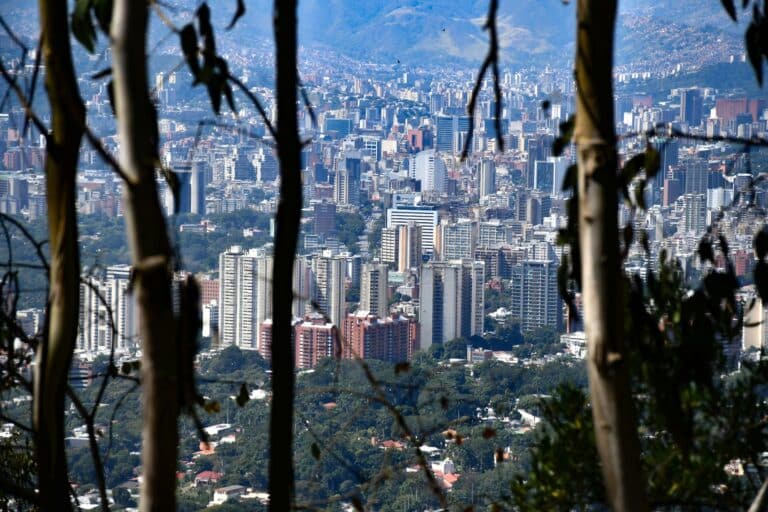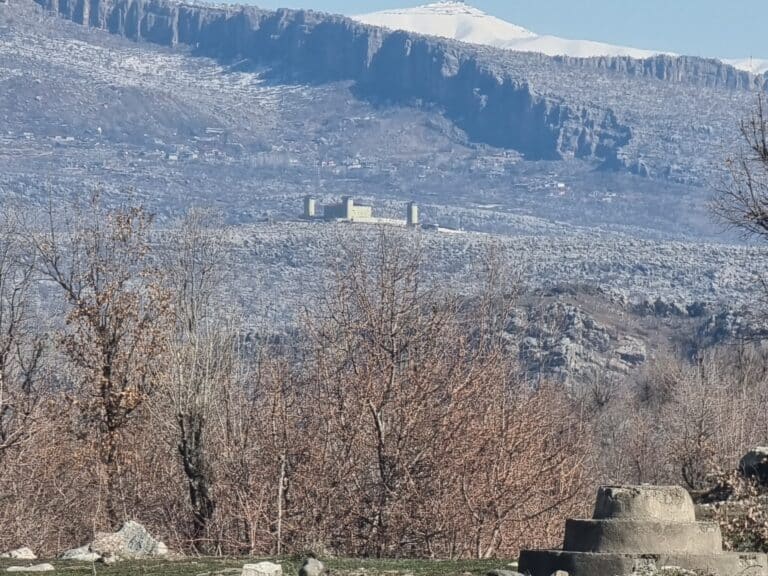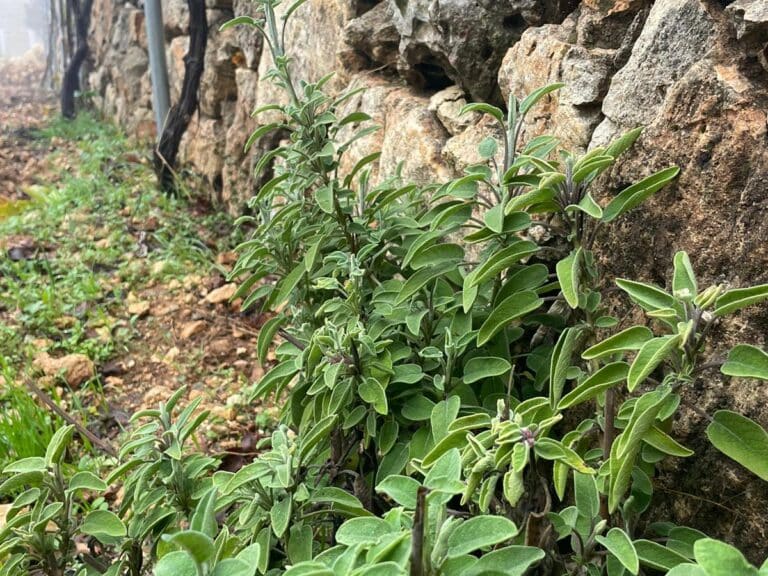A dear friend of the family, Dianne Roe, came from New York to Palestine to visit my husband, my kids, and me. She had been a member of Community Peacemaker Teams in Hebron from its infancy and is now a CPT alumna. She and her group of friends have made it their mission to educate me on Palestine and Israel’s military occupation. Dianne and I took a trip to the CPT office in Hebron, where we spent two nights as some of the first guests to stay since the pandemic. When Dianne and I reached the Old City of Hebron, I was horrified by the enormous Israeli military compound that was adjacent to the Community Peacemaker Teams’ office and apartment. I couldn’t help but think, “Oh my God! What the hell did I get myself into?”
When Dianne and I approached the second floor of the CPT building, we were immediately welcomed by CPT members Ahmed and Tarteel, who offered us tea and coffee. As we began talking about our lives, our professional experiences, CPT’s mission and daily routine, my anxiety melted away. Dianne and I settled into the apartment for the day at 5 pm. The CPT members, unfortunately, had to decline my dinner invitation as they must return home before dark, or risk harassment from settlers and occupation soldiers.
A next-door neighbour, a stately, strong, middle-aged Palestinian woman, recognized Dianne and offered to cook us dinner. We had just met, but I felt like I had known her for years. She and I walked through the market, where you can find everything from home goods to clothing, shoes, fresh fruits and vegetables. The streets are enmeshed in barbed wire, and right above the market was a steel-grated floor where soldiers paced overhead outfitted in full military regalia and brandishing large calibre rifles. There was a noticeable number of vacancies scattered throughout the Old City market. Many of the storefronts had been shuttered by order of the occupation forces with many of the shopkeepers’ merchandise still inside, the neighbour informed me as we were walking. Although I was deliberately striving not to make eye contact with any soldiers, I saw one who stood overhead staring down at me through the steel-grated cage floor with his large rifle in hand—the kind of rifle I had only seen before in action movies.
Later that evening, Dianne and I settled into our rooms for the night. I put on some music to relax when suddenly, I overheard what sounded like a marching military drill. At midnight I heard a mysterious drumline. I cowered out in the hallway on the stairwell and recorded the music from outside onto my phone. I felt afraid and called my dad in Ohio, who stayed on the phone with me until the music stopped. I was frightened of the fortified military structure that is so close to the CPT office, and I feared that they could easily see what I was doing inside the apartment. I imagined the Israeli military in full riot gear breaking in and raiding the apartment. The music stopped, and I eventually slept.
CPT School Patrol
The following morning we woke up at 6am for school patrol, a program that CPT created some years ago to ensure that Palestinian children get to school without being harassed and accosted by soldiers in the street or at a checkpoint. I was still half asleep when we left, and I had no identification on me because I had no idea where I was going. We walked through checkpoint after checkpoint. Luckily, everyone else who was with me was asked for identification, but not me! We arrived at our destination, where we stood as we watched schoolchildren cross a major checkpoint, which was so large it could have easily been mistaken for a train station. We remained until we could see that the schoolchildren made it safely to school.
We walked back to the CPT office and apartment. I walked with another volunteer ahead of everyone else while we discussed our lives back home, our significant others, what we thought of Palestine, and what we were doing here. As we were walking through the Old City of Hebron, my husband’s cousin Layla, who is also a friend of Dianne, stopped us and offered us breakfast; she had a small table set with pita bread, baked beans, hummus, labaneh, and tea.
As I approached the end of my first day with CPT, I had some concerns about some of the CPT reports that I had read. I wondered about the mental health of the schoolchildren and how the issue of mental health is being addressed by the CPT, the kids’ families, and the schools themselves. I thought that the Hebron school children could use some specialized training to educate them on how to handle a situation and how to respond when a soldier confronts them. I also believe that my own children could use the same type of training; my eleven-year-old son, Kareem, has already been stopped by Israeli occupation forces on several occasions. Thankfully, Kareem has walked away from these encounters with the soldiers unscathed so far. Ahmed responded to my concerns by explaining that it is up to the parents to look after the mental health of their children. He said that families and schools do not become proactive about a child’s mental health until it reaches a crisis point. Ahmed also addressed the military marching band that I had heard the night before. He said that it was likely that the Israeli settlers were playing loud music at night to annoy their Palestinian neighbours. By the time we had finished our discussion, it was time for the CPT staff to leave for the day.
House Demolitions in Bani Na’im
On the second day, the team had arranged for me to go with Ahmed to an occupation-ordered home demolition in the rural Hebron village of Bani Na’im. We took a 40-minute bus ride to Bani Na’im, where Mohammed Rashid Hussein Manasra met us and drove us in his truck to his home that had been demolished. While we were driving through his tiny, isolated village, Manasra explained that all the houses on that mountainside and in the valley below are scheduled for demolition.
When we reached our destination, we got out of the truck to take photos of the place where his home had been reduced to a pile of concrete rubble. Manasra invited us inside his son’s home, where he offered us tea and cookies and continued his story. He had been building the home for himself and his wife with the intention of living closer to their son and grandchildren. Manasra’s family had received two demolition orders within one year, and the family was never notified as to when the demolition was going to take place. Many residents in the area had received more than seven demolition orders, which is a tactic frequently used by the Israeli government to force residents to move and abandon their homes.
It is common practice for Palestinians to build homes without legal permits because even if residents go through a formal expensive legal process to acquire a permit, the permit will most likely be denied. The system of military law in the occupied Palestinian Territories is based on military orders that justify destroying Palestinian homes to create more space for Jewish Israeli settlers. As the demand for Jewish settlements continues to grow and the size of the settlements continues to expand, Palestinians are constantly pushed out of their homes and expelled from their land.
The Manasra family was not allowed to go to the hearing about the demolition of their property, but they did obtain a lawyer to handle the legal proceedings. The family is not planning to rebuild because it is very likely that the home will be demolished again. Despite having legal representation, as Palestinians, they are facing an Israeli military court implementing military orders that only defend the property of Jewish Israelis. Although Manasra is in communication with a human rights organization in Bethlehem pertaining to the demolition of his property, it is unclear what assistance this organization can offer him.
On the day of the demolition, the family was ordered by occupation forces to step away from the property, and they were not permitted to enter the property to retrieve their belongings. All the Manasra family could do was watch as their home was being torn to pieces and reduced to dust and rubble. A neighbour living close by saw what was happening and tried to plead with the soldiers conducting the demolition. The neighbour ended up getting beaten and bloodied to the point where he had to be rushed to a nearby hospital. He later recovered.
The destruction of property in the Palestinian Territories is nothing new; the Israeli government has been demolishing Palestinian-owned businesses and homes for decades. The Israeli administration does not keep demolition records, however, the United Nations Office for the Coordination of Human Affairs tracks and records the demolition of Palestinian-owned structures. From 2009 to 2022, 8,875 Palestinian-owned structures have been demolished, displacing 12,973 Palestinians. Nineteen percent of the Palestinian-owned structures that have been demolished were destroyed in Jerusalem, and a staggering seventy-nine percent of Palestinian-owned structures that have been demolished were demolished in Area C of the Palestinian Territories. From 2009 to 2022, 34 Palestinian-owned structures were demolished in Bani Na’im, and 48 Palestinian structures were demolished in my own hometown of Al-Ezariya, which was startling to discover1.
New Sense of Freedom
My final school patrol in Hebron with CPT was a bittersweet one. We walked through checkpoint after checkpoint as we had before. However, this time, at the third checkpoint, I was asked for some identification by a soldier. I pulled my Palestinian ID out of my back pocket and showed it to them. Both soldiers were puzzled as to how and why I had a Palestinian ID. They looked at each other, and then fortunately they allowed me to pass without any issues.
It was time for Dianne and me to leave. The team thanked me for coming because it allowed CPT to be present in Bani Na’im, and they told me I am welcome to come back to Hebron any time. Dianne and I went down to the CPT apartment downstairs to gather our things. I reflected on the many years I had spent living in social isolation in Al Ezariya. It has had a major impact on my emotional, psychological, and physical well-being. Ironically, going to Hebron, one of the most repressive parts of Palestine, gave me a new sense of freedom. I was inspired and awed to see how the people in the Community Peacemakers Team, which includes Palestinians and volunteers from all over the world, work together toward a common goal, to support the Palestinians’ nonviolent resistance to Israel’s military occupation in Hebron. I appreciated how they welcomed me, included me in their organization’s activities, and valued my participation in their daily school patrols, meetings, and witness to a house demolition. Although I still felt some fear, I also felt acceptance and empowered to do something in support of the Palestinian people, even though the situation here hasn’t changed. Thank you, Dianne and CPT, for taking me on this journey of self-discovery and purpose.
1“Data on Demolition and Displacement in the West Bank.” United Nations Office for the Coordination of Humanitarian Affairs-Palestinian Affairs, United Nations , 25 Oct. 2022.

![Makeshift barriers cut off access in H2 Hebron, accumulating trash. On the wall there is graffiti that reads "Make [heart], not walls."](https://cpt.org/wp-content/uploads/230119-Palestine-LouisBockner-scaled.jpg)


